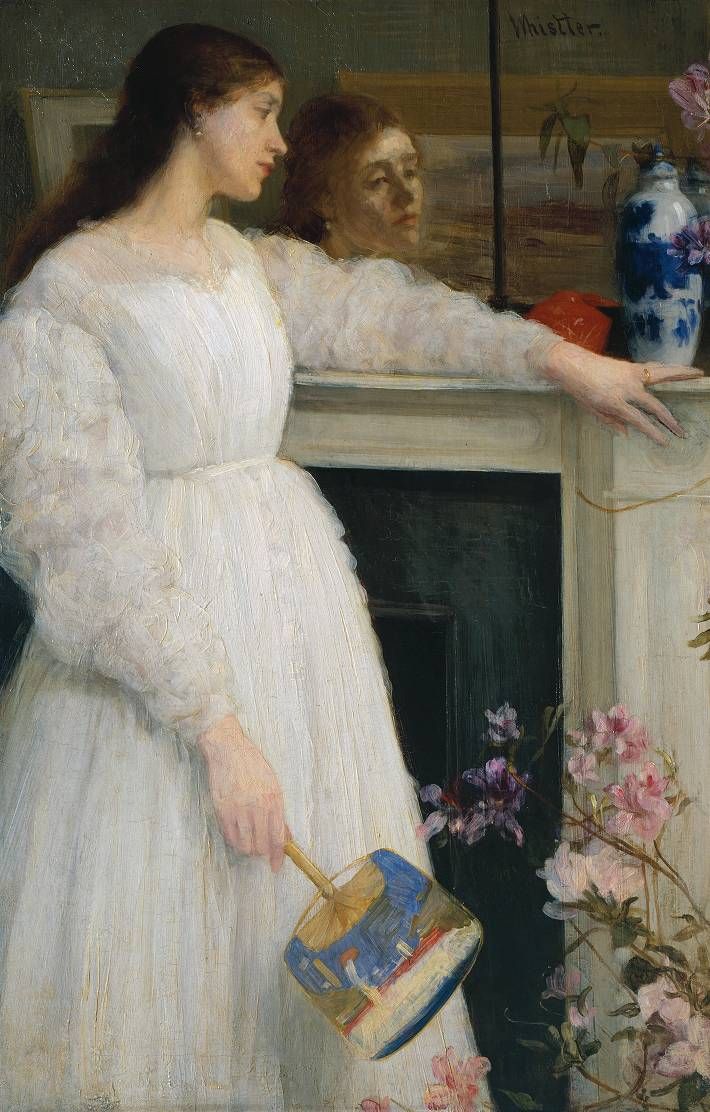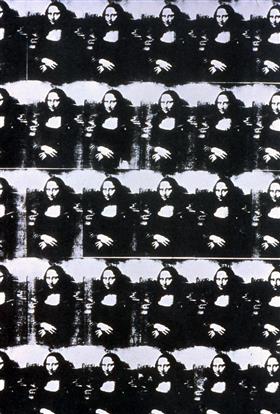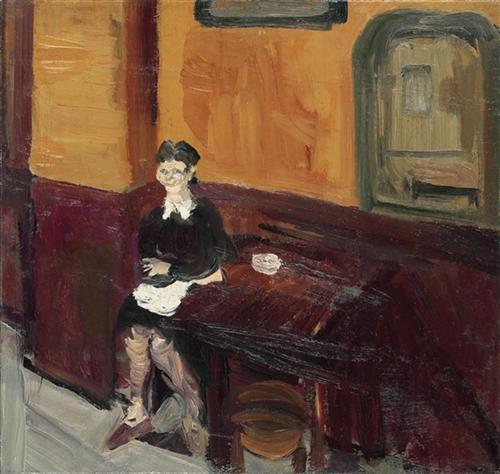图片尺寸:710 × 1112 像素
作品名称:Symphony in White, No. 2: The Little White Girl
中文名称:白色交响曲,第2号:白衣少女
创作者:詹姆斯·惠斯勒 James McNeill Whistler
创作年代:1864
风格:现实主义
体裁:肖像画
材质:布面油画
现位于:Tate Britain, London, UK
实际尺寸:76.5 x 51.1 cm
版权信息: Public Domain(公有领域)
作品介绍
机器翻译:
白色交响曲第2号,又称《白衣少女》,是詹姆斯-阿伯特-麦克尼尔-惠斯勒的一幅画。这幅作品展示了一个四分之三身材的女人站在壁炉边,壁炉上有一面镜子。她手里拿着一把扇子,穿着一件白色的衣服。模特是乔安娜-希弗南,艺术家的情妇。虽然这幅画最初被称为《白衣少女》,但惠斯勒后来开始称它为《白色交响曲第2号》。他用如此抽象的术语来称呼他的作品,意在强调他 "为艺术而艺术 "的理念。在这幅画中,赫夫南的无名指上戴着一枚戒指,尽管两人并没有结婚。通过这种宗教意象,惠斯勒强调了他作品背后的美学哲学。
惠斯勒在1864年冬天创作了这幅画,并在第二年在皇家学院展出。原来的画框上有惠斯勒的朋友阿尔杰农-查尔斯-斯温伯恩写的一首诗--名为《镜子前》--写在金色的纸片上。这首诗的灵感来自于这幅画,这种形式被称为回文诗,对惠斯勒来说,这表明视觉艺术不必屈从于文学。虽然关于这幅画的含义和象征意义的线索很少,但评论家们发现了对安格尔作品的影射,以及流行的Japonisme的典型东方元素。
原文:
Symphony in White, No. 2, also known as The Little White Girl is a painting by James Abbott McNeill Whistler. The work shows a woman in three-quarter figure standing by a fireplace with a mirror over it. She is holding a fan in her hand, and wearing a white dress. The model is Joanna Hiffernan, the artist's mistress. Though the painting was originally called The Little White Girl, Whistler later started calling it Symphony in White, No. 2. By referring to his work in such abstract terms, he intended to emphasize his "art for art's sake" philosophy. In this painting, Heffernan wears a ring on her ring finger, even though the two were not married. By this religious imagery, Whistler emphasizes the aesthetic philosophy behind his work.
Whistler created the painting in the winter of 1864, and it was displayed at the Royal Academy the next year. The original frame carried a poem written by Whistler's friend Algernon Charles Swinburne – titled "Before the Mirror" – written on sheets of golden paper. The poem was inspired by the painting, a form known as ekphrastic poetry, and to Whistler this demonstrated that the visual arts need not be subservient to literature. Though there are few clues to the meaning and symbolism of the painting, critics have found allusions to the work of Ingres, as well as oriental elements typical of the popular Japonisme.





